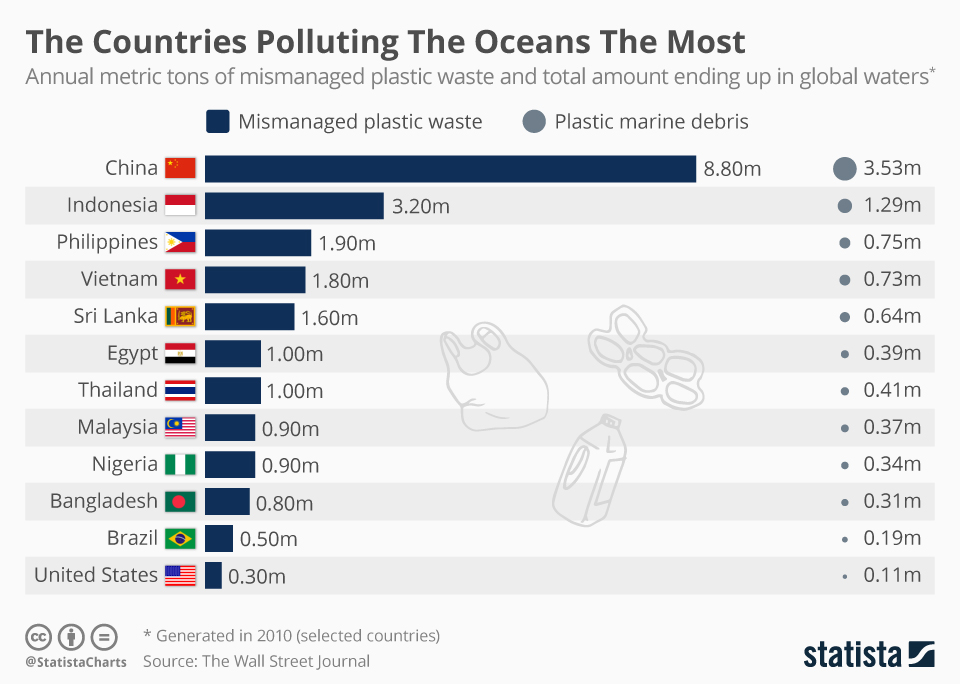The countries polluting the oceans the most with plastic waste
The international environmental association WWF has just published a new report about plastic pollution on a global scale. This report is ringing the alarm again because nothing gets better despite a generalized awareness. Indeed, according to WWF, the plastic pollution is uncontrollable. By 2030, the plastic pollution of our oceans could double, threatening marine life and our own health.
According to Isabelle Autissier, President of WWF France: "More than 310 million tons of plastic waste were generated in 2016, one third of which ended up in nature. The report is damning and has dramatic consequences for the environment, human health and the economy. The impact on biodiversity is particularly striking: to date, more than 270 species have been entangled and more than 240 have ingested plastic. "
Jenna Jambeck, environmental engineer at the University of Georgia, analyzed with a team of researchers the releases of plastic waste in the oceans around the world. They discovered that China and Indonesia are the main sources of plastic pollution for single use: bottles, packaging, main bags polluting the oceans. This study estimates that China and Indonesia alone are responsible for around 5 million tonnes of plastic waste ending up at sea each year. As the Statista chart shows, they are coastal countries crossed by the largest rivers such as Yangtze, Nile, Amazon, etc. or located on islands that drain the most plastic in marine environments.
According to the authors of the study, the 23 EU coastal countries would release about as much plastic debris in the marine environment as the United States.
Note of Statista: Originally this infographic incorrectly labeled the total amount of mismanaged plastic waste as the amount found in the water. It is now been updated to show the total amount of mismanaged plastic waste and the total amount of plastic marine debris.
China just put the brakes on buying up nearly half of the world’s exported plastics, but which country is really to blame for our plastic pollution? Here’s what we know.
Plastics in the marine environment is one of the major concern because of their persistence at sea, and adverse consequences to marine life and potentially human health.
Rivers annually emit between 1.15 and 2.41 million metric tons of plastic to the oceans.

